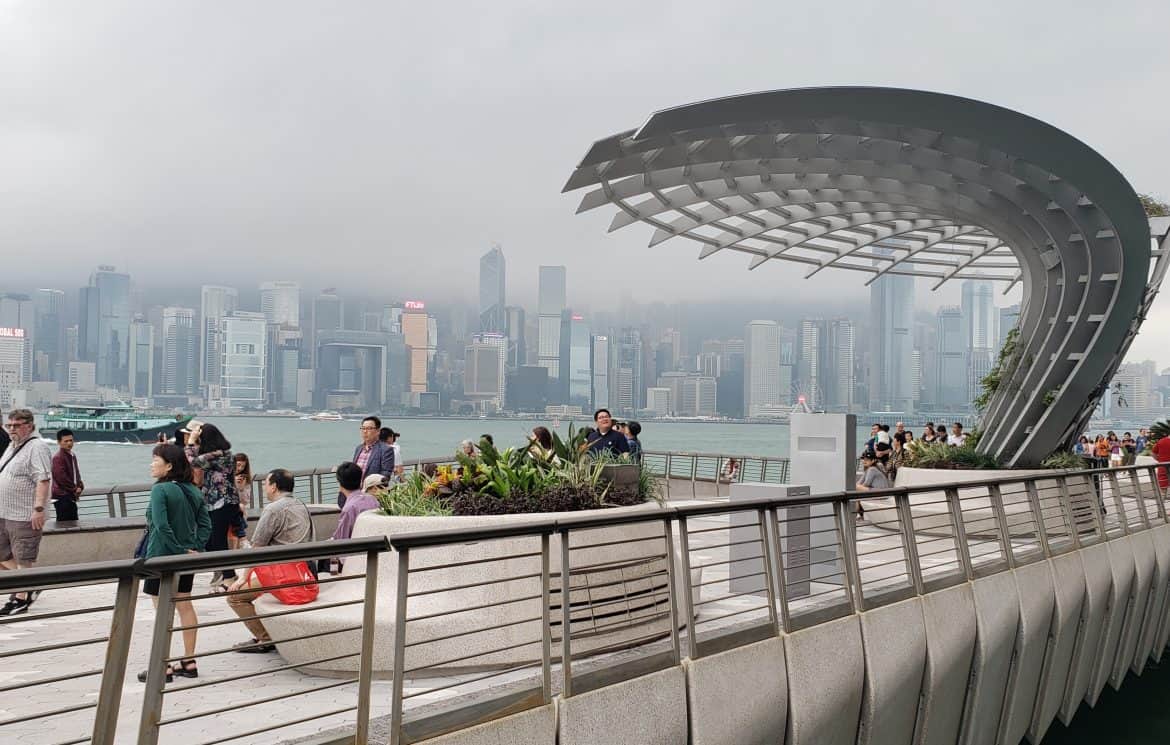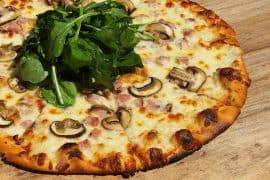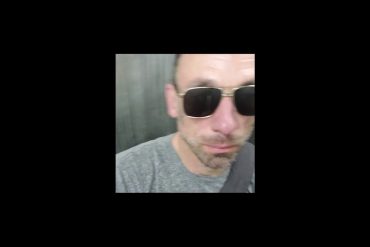Going Beyond Act to Understanding the Fragrant Harbor
written and photography by Kevin Max
To understand is difficult; to act is easy.
—Dr. Sun Yat-sen, as quoted in Great Britain and the East, 1944
My first visit to Hong Kong came in April, as rains subsided and temperatures pushed into the 80s and humidity in the 90s. In a city of 7.4 million people over two main land masses, I was here to do it all—history, cuisine, art, and to walk or run as much as possible. I’ll admit that, until this trip, my knowledge of Hong Kong formed little more than a thin film of its British rule, shumai dumplings and Bruce Lee. I know. I had a lot of acting to do that I hoped would lead to more understanding. I had one week.
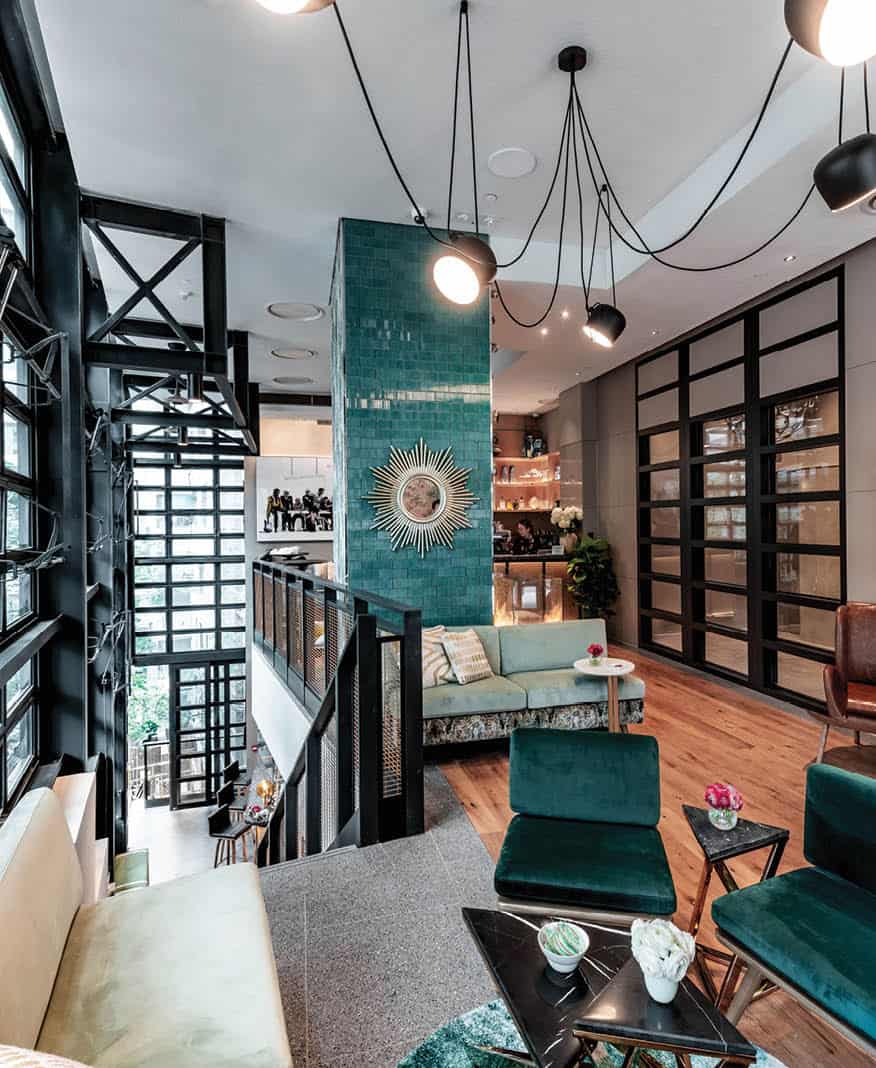
Beginning in July, Cathay Pacific will begin daily nonstop flights from Seattle to Hong Kong, making the Pearl of the Orient that much more accessible for Pacific Northwesterners and, for me, a viable excuse to connect with the past of a Seattle icon. Seattle’s first international Hollywood star, Bruce Lee, went to school at the University of Washington, lived and taught martial arts in Seattle and was buried on Capitol Hill. He spent childhood years in Kowloon, mastering the discipline that would catapult him to film stardom and his later years in Seattle. Lee died in Kowloon in 1973, when he was just 32 and a month before Enter the Dragon, his first major American movie, premiered.
Hong Kong translates to “fragrant harbor,” whose shores on the South China Sea made it a compelling port in early international trade. Today Hong Kong is abuzz, thanks largely to the booming Chinese economy, the rise of the Chinese middle class and an ease of travel restrictions from mainland China.
Once under the rule of the British Empire after the Opium Wars, the Chinese-administered area remains a free market zone outside of the closed Chinese market. With increasing disposable income, Chinese are shedding the old skin and demanding bespoke goods, not merely mass-produced megafactory items for which China is known. Hong Kong has been quick to respond to the surge in mainland Chinese visitors and their quest for a new experience.
Outside, the rain magnified lights from neon signs—the nostalgic preference throughout the city. Hong Kong’s signature red cabs swarmed like koi, swallowing then ejecting wet people.
Hong Kong is two main bodies separated by the Kowloon Bay. I divided my time between Hong Kong Island and the peninsular Kowloon.
The first part of this trip, I stayed at the cool Hotel Ovolo in the Central district on Hong Kong Island. This hotel has a cutting-edge chic with engaging pop art. Like most things in Hong Kong, Ovolo is vertically oriented. It has just a couple of rooms on each of its twenty-six floors and a suite on the twenty-seventh floor. In a city where space is at a premium, Ovolo’s rooms are surprisingly large. Part Ian Schrager with tech upgrades from James Bond’s Q, Hotel Ovolo provides a soft entry to Hong Kong. From the bed, for example, you can click a few buttons to lower the shades, close the curtains and raise the TV—key pieces to the jetlag antidote. “You musht be joking!” Connery’s Bond would have mused.
Across the street from the hotel is a modern architectural curiosity in the midst of centuries-old brick and stone. Tae Kwon Center for Heritage & Arts lives in an old British colonial police station and prison. Swiss architects Herzon and de Mueron and British historic building conservation studio Purcell saved the historic building and added two new buildings known as the Tai Kwun JC Cube. These are cube-shaped boxes that appear to be made from chocolate-colored pavers and unevenly stuccoed together. The juxtaposition of old and new is stunning here as it is throughout the city.
The neighborhood around Ovolo and JC Cube is a well-heeled metropolis hopping with Turkish, Lebanese, Italian, Thai, Mexican, Japanese and Chinese restaurants as well as shops touting top brands from Rolex to Patagonia.
I wandered for an hour in a jet-lagged haze before being drawn into Chifa, a small Peruvian-Chinese dumpling shop on Peel Street. Out of this fusion came dishes such as lomo saltado dumplings and crispy wontons with pork belly, king oyster mushrooms and sesame oil. I had my first taste of Hong Kong.
Outside, the rain magnified lights from neon signs—the nostalgic preference throughout the city. Hong Kong’s signature red cabs swarmed like koi, swallowing then ejecting wet people.
My travel exploration almost always begins in the early mornings with a run through streets and plazas, boardwalks and neighborhoods. You can glean quite a bit from this perspective. Does the local government fund clean streets and sidewalks? Does the community value public art? Is it an active community with runners and cyclists? Are the retail centers walkable? And where is dead center of pub density?
Benjamin So is a Hong Kong native who spent many years abroad in New Zealand. He has recently returned to Hong Kong, where he manages an import/export business and, as a part-time gig, leads guided cultural runs around Hong Kong Island.
I found So on Airbnb, which now lists local services and outings for its venues. He had recently hatched the idea of a cultural running tour, and I was one of his first customers. We hit it off immediately and ran headlong into Hong Kong humidity. We ran to Sun Yat-sen Park, where he gave me a condensed history of the medical doctor and philosopher who led the Kuomintang rebellion to end the Qing Dynasty and dynastic rule of China. To the Chinese, Sun Yat-sen is the father of modern China. The park dedicated to him has basketball courts, soccer fields, a pool and a wide open green field encircled by a running path that opens to the Victoria Harbor. This space is functional, open and hopeful, what I imagine it would have felt like for Chinese in 1911 after dethroning the 6-year-old Emperor Puyi—the last of 2,000 years of imperial rule.
Farther along, So stopped in front of a small storefront which displayed a range of cardboard and blow-up objects. Gaudy candles, incense, cardboard yachts and race cars, inflatable suitcases—all the trimmings of a college dorm room outfitted by a toddler. This, he revealed, was a funeral shop, explaining the meaning and tradition behind the various items.
We ran up a steep road and paused in front of a small temple. The Palace of Moon and Water Kwun Yum Temple, was no bigger than a Brooklyn brownstone. “People use this every day,” So said. “Students come here before and after exams to pray.”
A showpiece temple was our next stop. Man Mo Temple was built in 1848 and stands in mystical homage to the literature god, Man Tai. It’s free and open to passersby, the inside hung with many Chinese lamps and bells and strewn with copper samovars whose sand is speared with burning incense sticks. On the irreverent spectrum, selfie stars target midday when the sun pours through skylights to illuminate the columns of incense, looking to capture a millisecond of gravity for a thousand likes—even better when posted with a solemn (but uplifting) quote from a philosopher they Googled.
And on we went until we had made a 5-kilometer loop that included Chinese history, culture, religion, politics, taxes and death. If you’re a runner and explorer, I highly recommend Benjamin So’s running tour of Hong Kong Island.
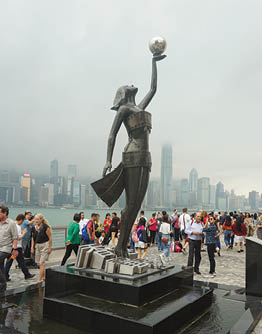

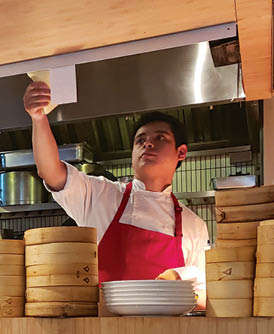
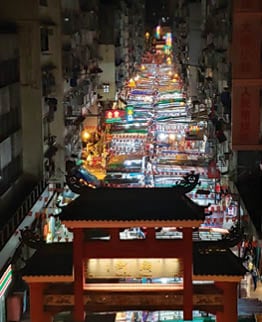
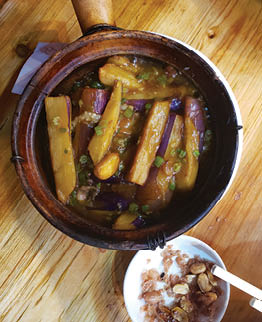
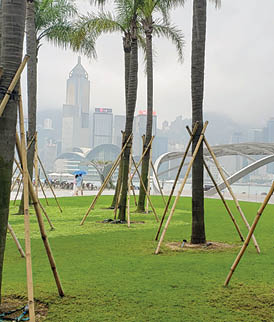
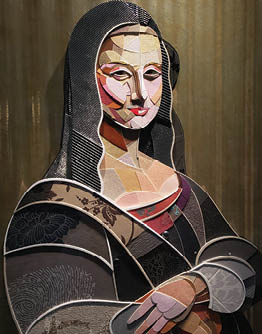

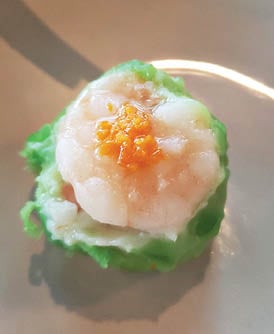
During the next phase of my stay, I took an Airbnb studio in a run-down neighborhood a few blocks off of the main boulevard, Nathan Road, the first street built in Kowloon after the collapse of the Qing dynasty. I was on the ninth floor of a ten-floor building, making it too high to jump from its dilapidated foundation should there be any seismic activity. I was with the people.
Kowloon is scrappy, bustling, hard-working and beautiful in its tired state. One of its main attractions is the massive Temple Street Market. Small restaurants serving authentic street food line the narrow streets. Every evening a village of booths springs up in the middle of the street and stretches for a mile, with vendors hawking silk and cashmere scarves, womens’ handbags, leather goods, T-shirts marketing such phrases as “What’s Up Dude?” and “Not Now, I’m Busy,” mobile phone accessories galore, shoes, jade and other local jewelry, paintings and more.
I bought gifts without bargaining too hard. Sometimes I walked away from unmotivated sellers, but mostly settled at about half of the original asking price, which I took to be the seller’s true asking price. For one item, though, I ended negotiations with the seller one night and came back the next and paid the ending figure from the night before. She remembered.
The food in and around Temple Street Market is cheaper than the island, paid for in cash and epitomizes Hong Kong street food. There are dumpling joints, Indian eateries, seafood cafes and at least one Hong Kong bubble waffle window. Bubble waffles, or egg waffles as they’re sometimes known, are waffles that instead of being covered with indentations are instead laden with egg-shaped bubbles, and are enhanced by banana and chocolate, coffee, bourbon and other creative takes.
One morning, I decided to put a little more structure to my wandering. I signed up for a class entitled “Learn Photography with HK Instagrammer.” William was young—no older than 25—wore black-rimmed eyeglasses, shorts, a T-shirt and a baseball hat. His English was near perfect and he had an easy way about him while conducting our group of ten aspiring Instagrammers. Over the next two hours, we learned new techniques as we moved from visually appealing old buildings to food shots at his favorite bakeries to open air markets and “the world’s most colorful basketball court.” With just a phone and two hours, we learned to frame shots for impact and saw Hong Kong through William’s eyes.
Perhaps one of Kowloon’s most visible developments is the Victoria Dockside. Originally built in 1910 as Holt’s Wharf, a nearly $2.6 billion waterfront real estate development project christened as Victoria Dockside is the new upscale center for art, design, cuisine and accommodations in Hong Kong. New Yorkers may experience déjà vu seeing the work of High Line landscape designer, James Corner, plying his trade on the Kowloon waterfront’s Avenue of Stars. This is a tribute to the Hong Kong film industry and also the home of the 8-foot statue of Bruce Lee, poised to strike. Marshal your Kung Fu self and strike your best martial arts pose here.
The anchoring luxury hotel on the Dockside is the beautiful new Rosewood Hong Kong. This is a world apart from the streets of Kowloon as its calming interior is the work of Tony Chi, whose stylish modern minimalism is highly sought among luxury hoteliers. The inimitable New York-based designer brought a quiet sophistication to the Victoria Harbor. On the fifth floor, and with stunning views across the harbor, The Legacy House restaurant is an artistic form that combines cuisine and ambience. Dim sum are made at the bar by the dumpling chef. Beyond him the rain streaks the floor-to-ceiling windows, blurring dollops of color over the bay and through the glass, making an impressionistic painting of the Victoria Harbor.
The whole rest garden could have easily fit in a backyard in the Midwest if you tried. The park was divided in half by function. One side was green with plants and quiet, as if people were there to pay their respects to the deceased. Older couples sat among the low manicured shrubs that comprise the urban landscape. The other half of the garden was cultivated with tobacco, loud bursts of language and two generals waging war.
On one of my last nights, I walked along Nathan Road and to my studio. Just west of Nathan, I saw stairs that climbed to a park called a “rest garden.” I thought I would cut the corner through this park and avoid foot traffic. It was dusk, but with the exception of a wan light filtering through Yau Ma Tei Centre Rest Garden in Kowloon, time was lost.
The whole rest garden could have easily fit in a backyard in the Midwest if you tried. The park was divided in half by function. One side was green with plants and quiet, as if people were there to pay their respects to the deceased. Older couples sat among the low manicured shrubs that comprise the urban landscape. The other half of the garden was cultivated with tobacco, loud bursts of language and two generals waging war.
A half-dozen old men bent with age encircled and smoked above two subjects sitting at a small stone table at a corner veranda. Between them lay a spread cloth designed with a grid of squares bisected by a blank row in the middle. On its lines lay circular game pieces with different single Chinese characters on each. The ancient war game of Xiangqi ensued.
One of the men, who appeared to be in his early 70s, was not sitting but squatting on the stone stool below him, as if ready to spring on his opponent if it came to that. His left hand was a warden, covering his captured pieces and subconsciously rearranging them in perfect stacks. His right hand, a trident of aggression. With a burning cigarette in it, he intermittently jabbed his index finger onto his or his opponent’s game pieces. If he had shattered a piece, no one watching would have been surprised.
His opponent across the table waged a different war. His offense was guided by silence and restraint, moving only his eyes when it was necessary and one of his hands to restack his captured pieces in a habit doubtless perfected over countless games and years.
Like two field commanders, each man pushed his pieces forward trying to outmaneuver the enemy. As the game wore on, the crouching commander grew more agitated. His volume increased, triggering grunts from the gallery of old men around him. His cigarette volume surged so that there was no time between his last and his next. His body flushed with nicotine and his hand began shooting out more violently, stabbing at pieces and places on the board, at times coming inches from his opponent’s nose. The silent one stared past this without blinking and out to the battlefield in front of him.
An hour had slipped past me in the drama. Beyond this gazebo in the corner of the rest garden, darkness crept over Hong Kong and took its place behind the glare of millions of neon signs throughout the city.
On the morning of my final day, I woke early to run Kowloon before the streets were filled with cars and the sidewalks were clogged with people. I thought this would be a short one, but this run somehow lasted two hours.
I ran from Temple Street Market south to the Avenue of Stars, past Seattle’s lethal son, Bruce Lee, and Rosewood Hong Kong and along the eastern seaboard where the elderly were out doing tai chi and where women moved in unison to a traditional Chinese tune and the meow of a two-stringed ehru, I pushed onward to where I first heard and then saw a dozen men laughing and bobbing in the bay for a morning swim and then back west through Cattle Depot Artist Village and close by the childhood home of Bruce Lee before heading south again where the streets were now teeming with life and the smells of flowers, grilled meats, fish, rubbish, almonds, bus exhaust, perfume, sweat and the sea.
In this act, I felt I had gained a few more steps to understanding this fragrant harbor.
Go here to see a run through Kowloon.
PLAN YOUR TRIP
Beginning July, Cathay Pacific will offer daily non-stop flights to Hong Kong.
Seattle-Hong Kong
Depart: 1 a.m.
Arrive: 5:10 a.m. the following day
Flight duration:
13 hours, 10 minutes
Hong Kong-Seattle
Depart: 11:55 p.m.
Arrive: 8 p.m.
Flight duration:
12 hours, 5 minutes


